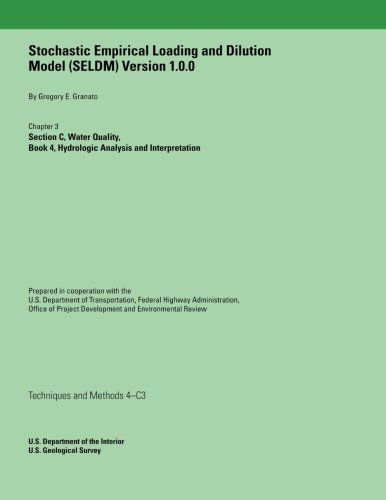
Stochastic Empirical Loading and Dilution Model (Seldm) Version 1.0.0
The Stochastic Empirical Loading and Dilution Model (SELDM) is designed to transform complex scientific data into meaningful information about the risk of adverse effects of runoff on receiving waters, the potential need for mitigation measures, and the potential effectiveness of such management measures for reducing these risks. The U.S. Geological Survey developed SELDM in cooperation with the Federal Highway Administration to help develop planning-level estimates of event mean concentrations, flows, and loads in stormwater from a site of interest and from an upstream basin. Planning- level estimates are defined as the results of analyses used to evaluate alternative management measures; planning-level estimates are recognized to include substantial uncertainties (commonly orders of magnitude). SELDM uses information about a highway site, the associated receiving-water basin, precipitation events, stormflow, water quality, and the performance of mitigation measures to produce a stochastic population of runoff-quality variables. SELDM provides input statistics for precipitation, prestorm flow, runoff coefficients, and concentrations of selected water-quality constituents from National datasets. Input statistics may be selected on the basis of the latitude, longitude, and physical characteristics of the site of interest and the upstream basin. The user also may derive and input statistics for each variable that are specific to a given site of interest or a given area.